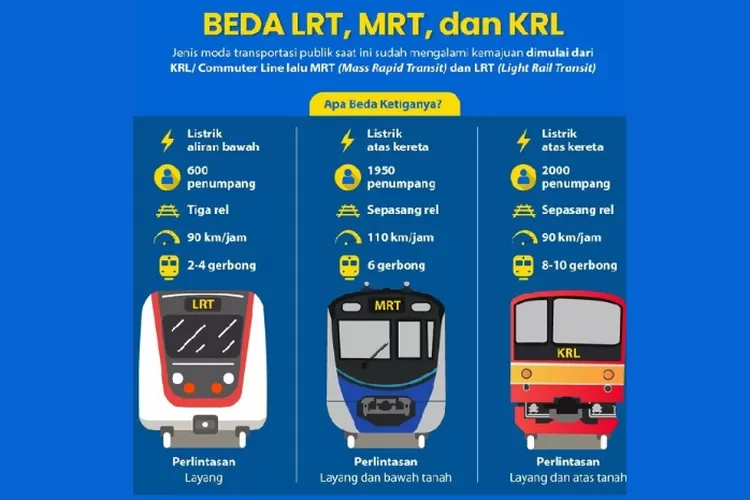Let’s find out what’s the difference between MRT KRL and LRT? Anybody know? Following are the Reviews and Detailed Explanations

[ad_1]
BONSERNEWS.com – Indonesia has various modes of public transportation including Light Rail Transit (LRT), Mass Rapid Transit (MRT), and KRL (Electric Rail Train or Commuter Line).
The development of the world of railways in the country is indeed quite rapid.
Of the three, the KRL will operate first, followed by the MRT, and lastly the LRT.
Also Read: Lady Nayoan Files a Divorce Lawsuit for Her Husband, Rendy Kjaernett, See Reviews and Explanations
Both KRL, MRT, and LRT function in assisting people’s mobility with coverage within the city or adjacent cross-city scope.
In contrast to ordinary trains, KRL, LRT and MRT use trains that move on rails that don’t use a locomotive, and use electricity as propulsion.
Even so, all three have some differences with their respective advantages. What is the difference between MRT KRL and LRT?
Also Read: Even though Prabowo Subianto was suitable for the Indonesian military captain, Effendi remains perpendicular to the PDIP
Adapted from the official Indonesia Baik website, the MRT and KRL electricity sources draw power from the electricity above the trains, known as Upper Flow Electricity (LAA), while the LRT draws electricity from below or Underflow Electricity.
MRT and KRL use a pair of rails to move, like the rail transportation system in general, while the LRT has a third rail that contains electricity or is commonly called the Third Rail.
For the size of the train and its carrying capacity, KRL has the largest capacity, followed by the MRT, and the smallest LRT.
KRL can accommodate 2,000 passengers, MRT carries 1,950 passengers, and LRT 600 passengers.
Even though it carries fewer passengers, LRT has the advantage of its ability to carry a number of passengers, which are calculated based on the frequency of its trips in a day.
The frequency of this trip depends on the distance between the train sets or what is commonly known as the headway.




